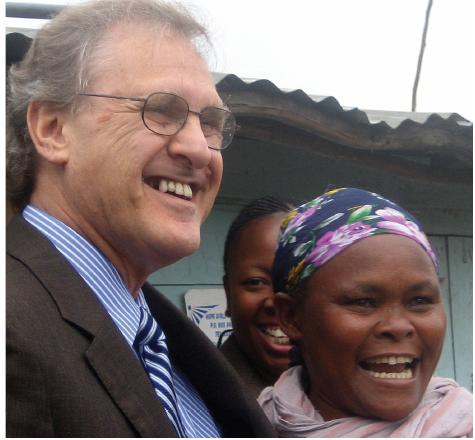How ethnic profiling explains Dani Rodrik’s fondness for industrial policy
Airline passengers recently ejected an innocent Muslim family from an airplane because they were afraid the family were terrorists. Similar reasoning explains why Dani Rodrik favors industrial policy as a key to success. Before getting overly critical of Dani, whom I admire a lot, let me confess I have frequently committed the same type of reasoning error myself, and so does virtually everyone else. But it’s still wrong.
All of us are making the amazingly common mistake of REVERSING CONDITIONAL PROBABILITIES. The airline passengers perceived from media coverage that the probability that IF you are a terrorist, THEN you are a Muslim is high. Unfortunately for the poor family, the passengers confused this with the relevant probability, which is the chance that IF you are a Muslim, THEN you are a terrorist (which is extremely low even if the first probability really is high, because terrorists are very rare).
So here is Dani Rodrik on success and industrial policy: “the countries that have produced steady, long-term growth during the last six decades are those that relied on a different strategy: promoting diversification into manufactured … goods” (cited in Economist’s View).
So Dani concludes, “What matters [for growth in developing countries] is their output of modern industrial goods” and that developing countries will have to get busy with “real industrial policies.” Finally, “external policy actors (for example, the World Trade Organization) will have to be more tolerant of these policies.”
Unfortunately, Dani is also REVERSING CONDITIONAL PROBABILITIES. Dani’s evidence is based on what he believes is the high probability that IF you have had steady growth for six decades, THEN you had industrial policy. This is interesting, but this is not the right probability in deciding whether to choose industrial policy, which is “IF you have industrial policy, THEN what is your chance of steady growth for six decades?”
This second, correct, probability would seem to be pretty low, since many other countries -- especially African and Latin American -- extensively tried industrial policies over the past six decades with low and erratic growth as a result. Attempts at forcing investments into industrialization led to a huge pileup of debt in Latin America in the 1970s, which erupted into a debt crisis in 1982 and subsequent lost decades, when the productivity of the investments proved to be low. The more extreme results in Africa include the Ajaokuta steel mill in Nigeria which went through $6 billion but never produced a bar of steel, or Tanzanian manufacturing, which had NEGATIVE growth of output per worker despite heavy capital investments. (For more on this see this paper.)
I am really going through a MAJOR Mlodinow slash Kahneman phase about how economists (present company included) misinterpret data. To all of you who I am tormenting with this stuff, I promise to move on to something more constructive soon, like maybe another edition of our popular series Notes from the Field.
 From Aid to Equality
From Aid to Equality

 With a
With a  (Mother’s Day Edition)
(Mother’s Day Edition) Laboratory experiments show that rats outperform humans in interpreting data, which is why we have today the US aid agency, the
Laboratory experiments show that rats outperform humans in interpreting data, which is why we have today the US aid agency, the  The long and remarkable reign of the celebrities in foreign aid shows no sign of abating. On a May 1 CNN special on TIME magazine’s new selection of the world’s 100 most influential people, according to a press release, “George Clooney — a four-time honoree — will sit down with U2 frontman and activist Bono to chat about fame and politics.”
The long and remarkable reign of the celebrities in foreign aid shows no sign of abating. On a May 1 CNN special on TIME magazine’s new selection of the world’s 100 most influential people, according to a press release, “George Clooney — a four-time honoree — will sit down with U2 frontman and activist Bono to chat about fame and politics.” In today’s NYT:
In today’s NYT: I was curious about what the going rate is these days for attracting customers who want to save Africa. Five cents was a little lower than I expected.
I was curious about what the going rate is these days for attracting customers who want to save Africa. Five cents was a little lower than I expected.